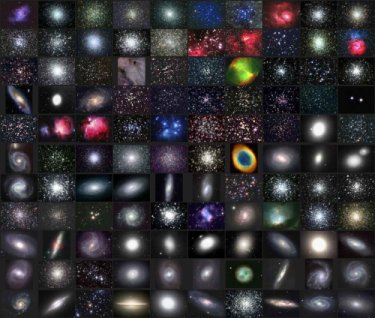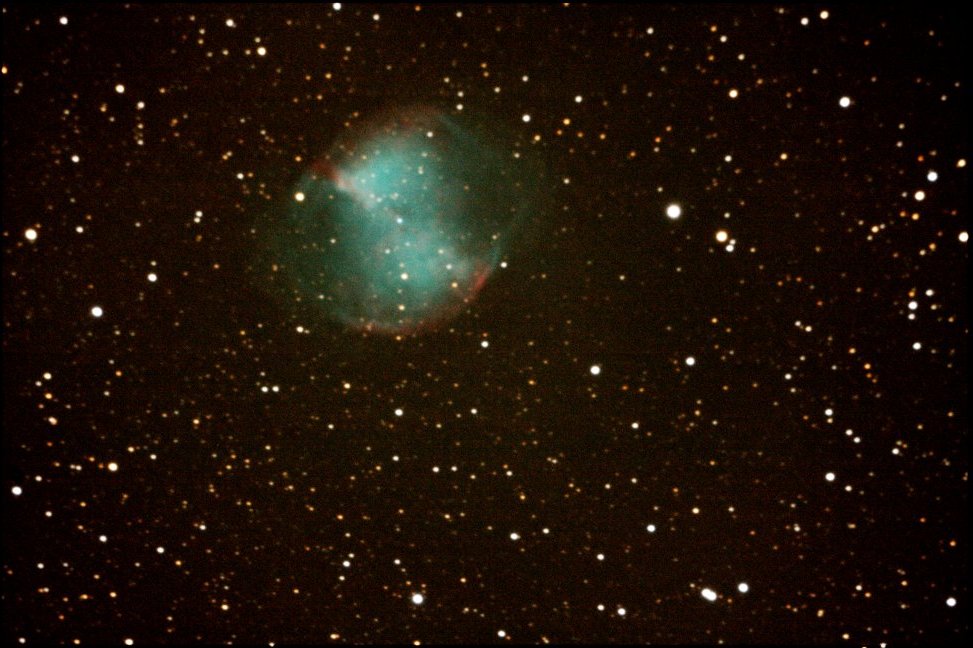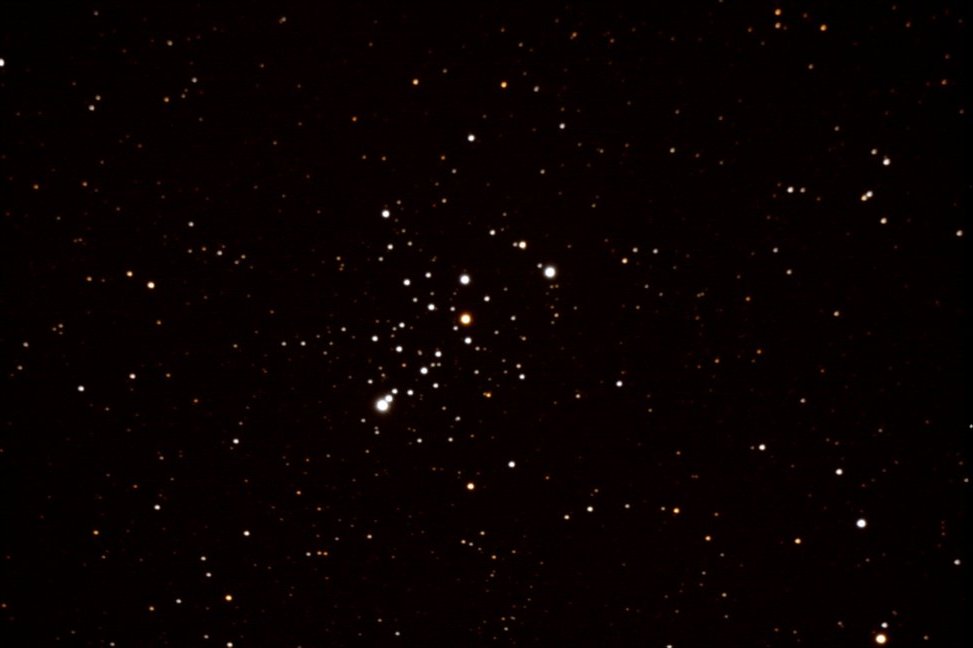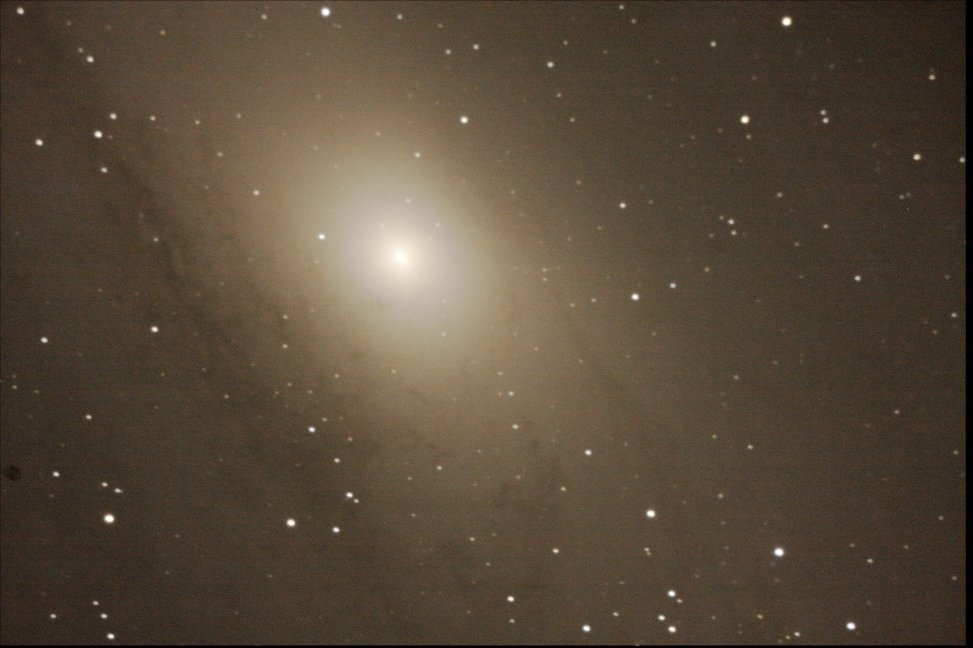

Further reading : Wikipedia, APOD, SEDS, NOAO, ESO
Equipment : Meade LX200-10"-Classic at f/10, SuperWedge, Canon EOS 40D,
PEC trained but unguided.
Image : Stack of 7 5-minute exposures. FOV is 30x20 arc minutes.
Processing : Camera controlled by the supplied Canon software via USB.
PC controlled via VNC. Stacking done with DeepSkyStacker 3.2.1. Image
levelling done with CinePaint, Curves done with the GIMP.
Date : 20080913
Location : Eindhoven, my backyard :)
Moon phase : 1 day before full moon

Equipment : Meade LX200-10"-Classic at f/10, SuperWedge, Canon EOS 40D,
PEC trained but unguided.
Image : Stack of 5 5-minute exposures. FOV is 30x20 arc minutes.
Processing : Camera controlled by the supplied Canon software via USB.
PC controlled via VNC. Stacking done with DeepSkyStacker 3.2.1. Image
levelling done with CinePaint, Curves done with the GIMP.
Date : 20080913
Location : Eindhoven, my backyard :)
Moon phase : 1 day before full moon

Equipment : Meade LX200-10"-Classic at f/10, SuperWedge, Canon EOS 40D,
PEC trained but unguided.
Image : Stack of 5 5-minute exposures. FOV is 30x20 arc minutes.
Processing : Camera controlled by the supplied Canon software via USB.
PC controlled via VNC. Stacking done with DeepSkyStacker 3.2.1. Image
levelling done with CinePaint, Curves done with the GIMP.
Date : 20080913
Location : Eindhoven, my backyard :)
Moon phase : 1 day before full moon
